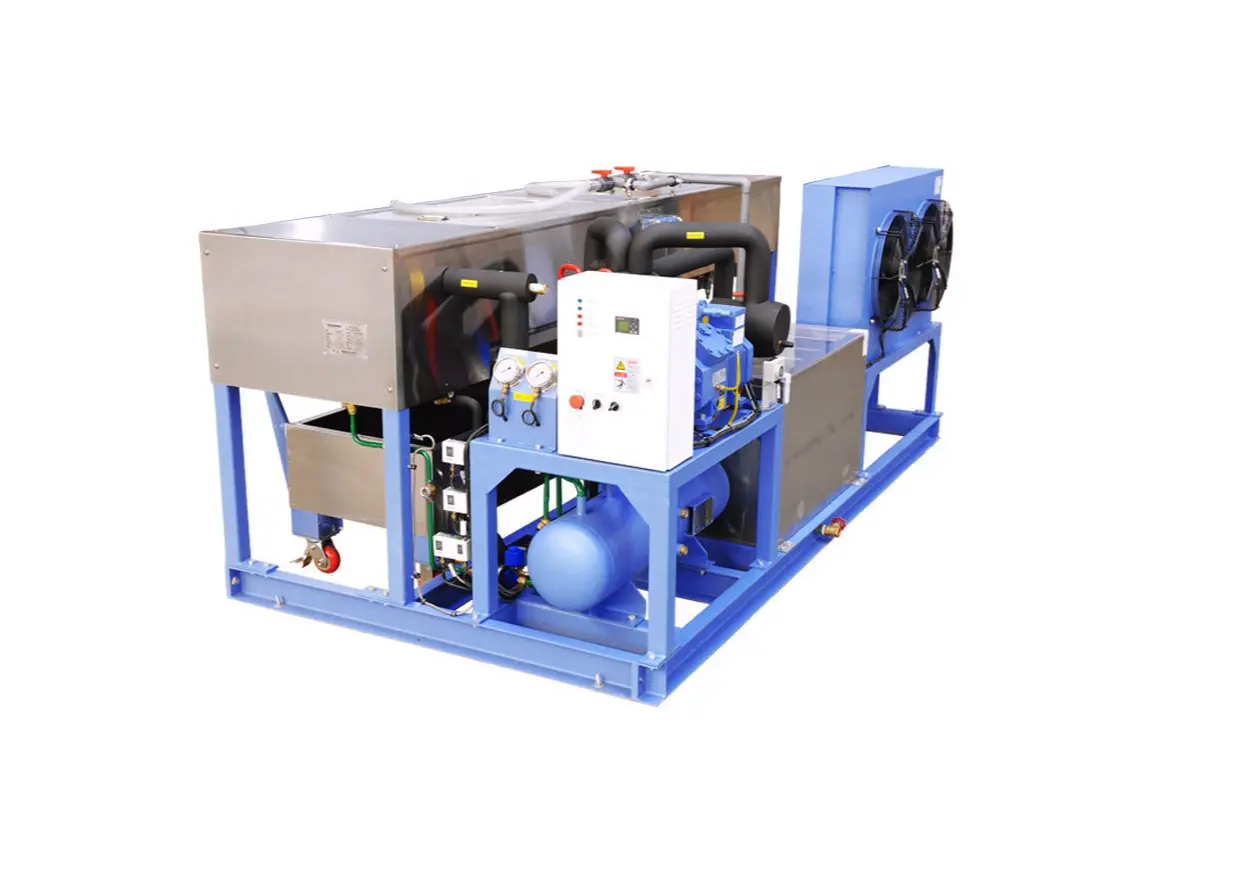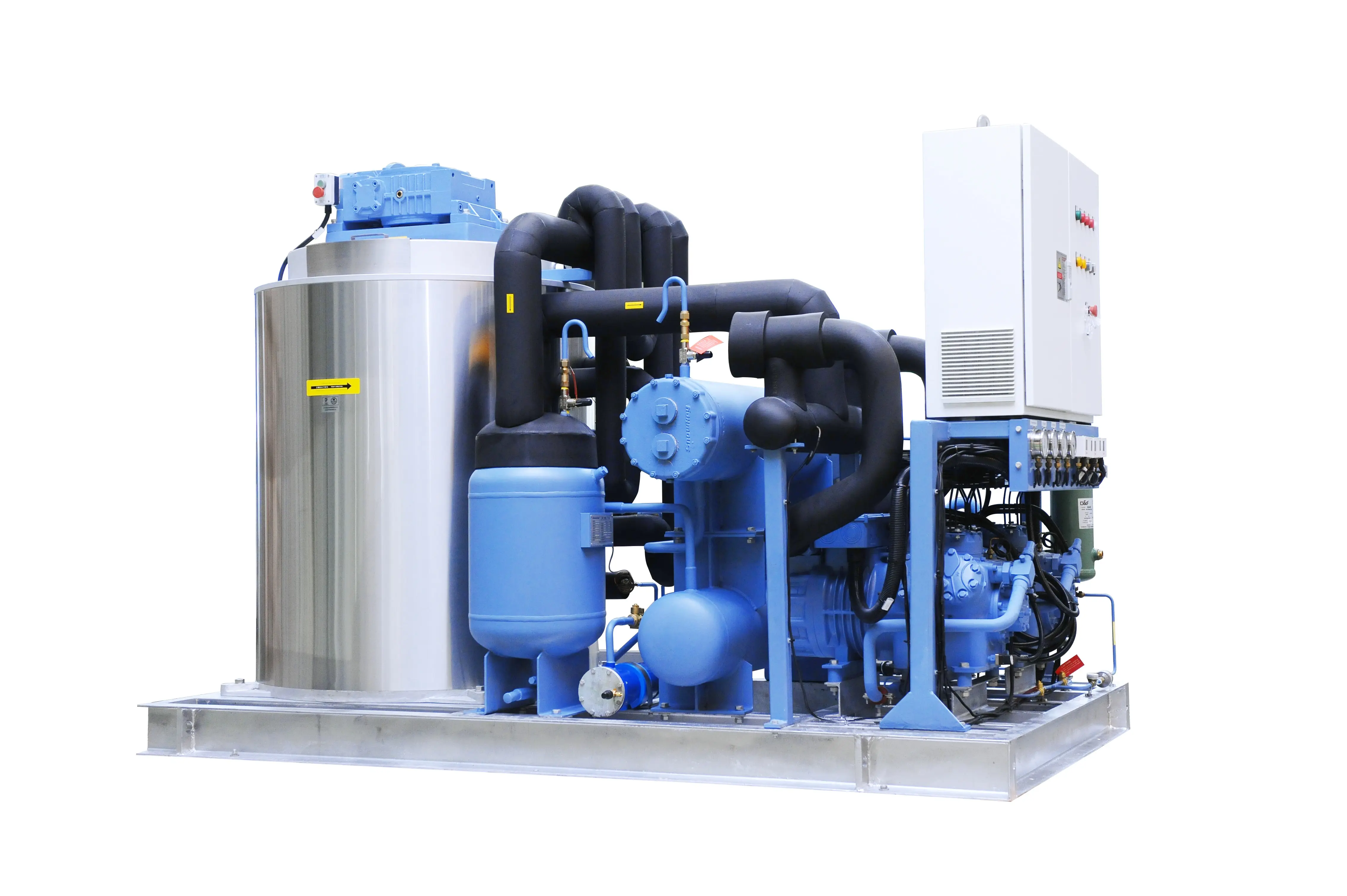Block Ice
Block ice can be used on smaller vessels out at sea. Block ice can be bought from an ice factory they normally come in 30-50kg blocks. These blocks stay frozen for long time, and can be transported on small fishing vessels for a day. At sea these blocks can be used, either by dipping in a bath of water, or by crushing the block ice, to keep fish or other marine life cool and fresh.
This is the most economical way of cooling seafood, as you do not require expensive onboard machines to produce ice. Which consumes energy and require regular maintenance.
However, the main disadvantage is that you cannot use this type of cooling for longer than a few days. as ultimately the block ice will melt.
Block ice is produced by block ice machines that are located on-land. Factories produce these blocks of ice for consumers in many industries, including the seafood industry. The machines are normally tank type or the newer, more efficient, direct-evaporator type.
A refrigeration engineer will help you select the right block ice system for you


